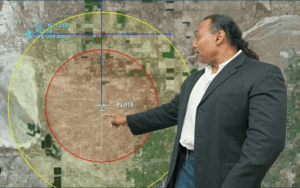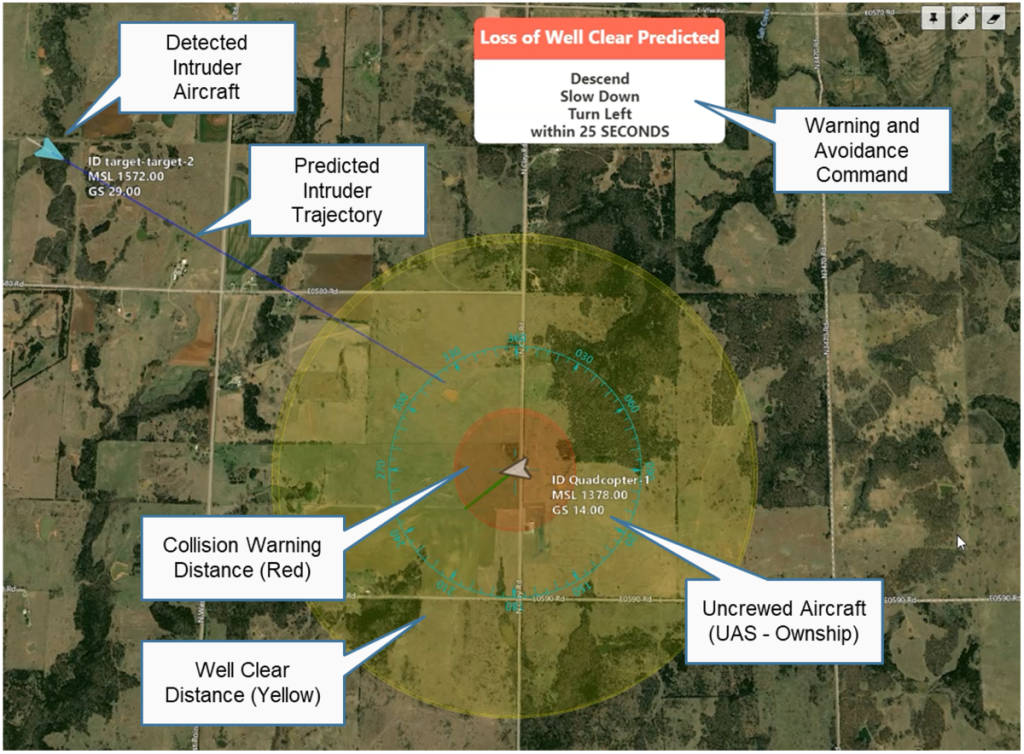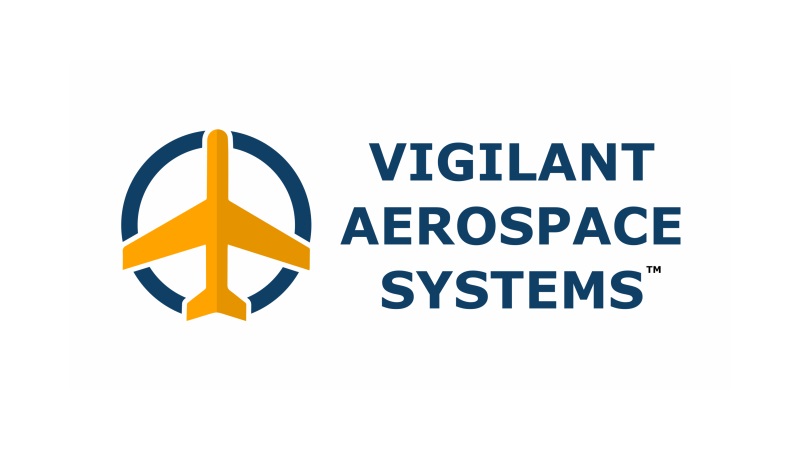FlightHorizon is detect-and-avoid and airspace management software that fuses data from aircraft transponders, radar, drone autopilots and live FAA data to create a single picture of the airspace around a drone. The software displays air traffic, predicts trajectories and provides avoidance maneuvers to the UAS pilot or autopilot. The system can be used on the ground or onboard the UAS and can be configured for any size of aircraft. It is designed to meet industry technical standards and to help UAS operators to fly beyond visual line-of-sight (BVLOS) under waivers or new FAA BVLOS rules. The technology is described by NASA in the announcement: “Uncrewed, remotely piloted aircraft – called unmanned aircraft systems, or UAS – have their own set of challenges to overcome when designing a safe flight path… NASA collision-avoidance technology combines algorithms, sensors, and software integrated on UAS. It offers improved traffic situational awareness, real-time weather monitoring, and navigation – all designed for the short-range trajectories most often used by UAS. The algorithm can automatically avoid collisions and route the aircraft back on its previous course once the potential collision is well clear… The technology has been licensed by a private company, Vigilant Aerospace Systems, which has used it to provide detect-and-avoid and airspace management solutions to two [FAA] Unmanned Aircraft Integration Pilot Programs.”“We believe that this invention fills a critical technology gap and will help lead the U.S. into a new era of safe autonomous aircraft flight.”
Read the full NASA announcement from March 30, 2022: Winning Technologies Benefit NASA, Industry on Earth and Beyond | NASA Epperson described the advancements Vigilant Aerospace is making in the industry utilizing the award-winning invention: “For Vigilant Aerospace, this award culminates an outstanding 12-month period of rapid technical and industry development. We recently finished serving on the FAA’s beyond visual line-of-sight rulemaking committee working on new rules for drone flight in the U.S., participated in Virginia Tech’s national detect-and-avoid trials, deployed our software to the Northern Plains UAS Test Site in North Dakota and completed groundbreaking beyond visual line-of-sight flights with the Alaska UAS Test Site under an FAA contract.”“NASA collision-avoidance technology combines algorithms, sensors, and software integrated on UAS. It offers improved traffic situational awareness, real-time weather monitoring, and navigation – all designed for the short-range trajectories most often used by UAS. The algorithm can automatically avoid collisions and route the aircraft back on its previous course once the potential collision is well clear…”
“For Vigilant Aerospace, this award culminates an outstanding 12-month period of rapid technical and industry development.”
About the NASA Commercial Invention of the Year Award
The Commercial Invention of the Year Award is made annually by NASA’s Inventions and Contributions Board. Selection of an awardee is based on these seven criteria: (1) Description, (2) Significance, (3) Stage of Development, (4) Use, (5) Creativity, (6) Recognition and (7) Tangible Value. Read more about the NASA Commercial Invention of the Year and other annual awards here: NASA Technology Awards and IncentivesAbout Vigilant Aerospace
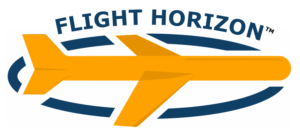 Vigilant Aerospace is the leading developer of detect-and-avoid and airspace management software for uncrewed aircraft systems (UAS or drones). The company’s product, FlightHorizon, is based on two NASA patents and uses data from multiple sources to display a real-time picture of the air traffic around a UAS and to provide automatic avoidance maneuvers to prevent collisions. The software is designed to meet industry technical standards, to provide automatic safety and to allow UAS to safely fly beyond the sight of the pilot. The software has won multiple industry awards and the company has had contracts and users at NASA, the FAA, the U.S. Department of Defense and with a variety of drone development programs. The company has offices in Oklahoma City and Fargo, North Dakota.
Vigilant Aerospace is the leading developer of detect-and-avoid and airspace management software for uncrewed aircraft systems (UAS or drones). The company’s product, FlightHorizon, is based on two NASA patents and uses data from multiple sources to display a real-time picture of the air traffic around a UAS and to provide automatic avoidance maneuvers to prevent collisions. The software is designed to meet industry technical standards, to provide automatic safety and to allow UAS to safely fly beyond the sight of the pilot. The software has won multiple industry awards and the company has had contracts and users at NASA, the FAA, the U.S. Department of Defense and with a variety of drone development programs. The company has offices in Oklahoma City and Fargo, North Dakota.
About NASA Armstrong and Inventor Ricardo Arteaga
The Armstrong Flight Research Center is NASA’s primary center for high-risk, atmospheric flight research and test projects. The center has the facilities and requisite expertise to conceive, design, analyze, fabricate, integrate, maintain and conduct disciplinary research, flight research and flight test using modified or unique research vehicles and systems. Armstrong’s strength is in integration of complex developmental systems. Named in honor of Neil A. Armstrong, a former research test pilot at the center and the first man to step on the moon, Armstrong is located at Edwards Air Force Base (AFB), California, in the western Mojave Desert. The center is uniquely situated to take advantage of year-round flying weather, a high-speed flight corridor, and 301,000 acres of remote area with varied topography to advance technology and science through flight. Mr. Ricardo Atreaga has over 34 years of experience in the field of Government and Aerospace engineering development programs, including the design and integration of navigation systems on the F/A-22 , B-2, and F117A aircraft. Mr. Arteaga received his Engineer Degree and Master’s Degree from the University of Southern California in Systems Engineering and also received a Master of Science in Computer Engineering from Syracuse University. Mr. Arteaga is a Research Engineer with NASA on the Constellation, SOFIA, and UAS-NAS programs. He is a member of NASA SEWG and has presented at AIAA, INCOSE and SFTE conference symposiums and has filed multiple patents with NASA and with Northrop Grumman Corporation and won several industry awards for his industry-leading work in advanced aerospace technology.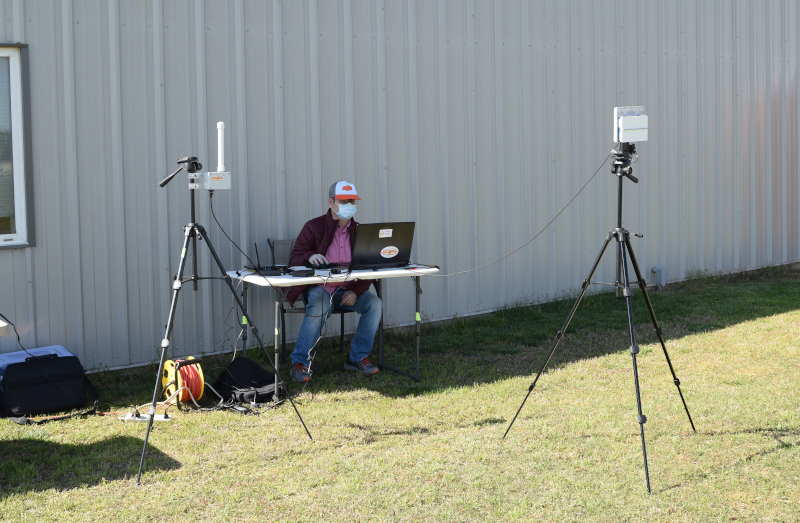
Vigilant Aerospace team testing FlightHorizon with portable radar at Oklahoma State University’s Unmanned Systems Research Institute.
Featured in:
 |
“Winning Technologies Benefit NASA, Industry on Earth and Beyond,” NASA; 29 March 2022. |
 |
“Vigilant Aerospace Detect and Avoid,” DRONELIFE; 6 April 2022. |
| “Detect-and-Avoid Tech Wins NASA Commercial Invention of the Year,” UAS Magazine; 5 April 2022. | |
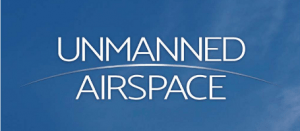 |
“Detect and Avoid technology wins NASA’s Commercial Invention of the Year 2021 award,” Unmanned Airspace; 5 April 2022. |
| “NASA Armstrong, Researcher and Vigilant Aerospace Win NASA’s Commercial Invention of the Year Award,” UAS Weekly.com; 4 April 2022. | |
 |
“DAA Technology Wins NASA Commercial Invention of the Year 2021 Award,” Unmanned Systems Technology; 5 April 2022. |
| Winning technologies benefit NASA, industry on Earth and beyond,” Aerotech News; 30 March 2022. | |
| “Detect and Avoid technology wins NASA’s Commercial Invention of the Year 2021 award,” Urban Air Mobility News; 5 April 2022. |

